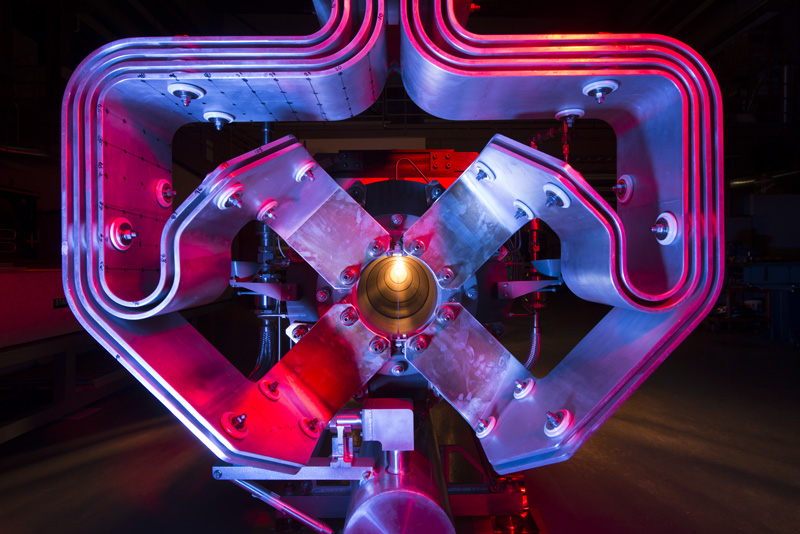‘Ghostly’ particles lead to major physics discovery

One of two magnetic focusing horns used in the beamline at Fermilab that produces intense neutrino beams for MINERvA and other neutrino experiments. (Reidar Hahn, Fermilab)
Scientists from MINERvA, a collaborative experiment designed to study some of the most vexing puzzles in physics, revealed a groundbreaking new way to view protons. The discovery, published today as the cover story in the world’s leading scientific journal Nature, is sending shock waves through the physics community. It’s a culmination of MINERvA’s collective expertise of nearly 70 scientists from 24 institutions, including UF’s own Neutrino Research Group.
At this very moment, tiny sub-atomic particles called neutrinos are moving through your body by the trillion. They cause no harm and rarely interact with other atoms. Thus, they’ve been dubbed “ghost particles” for their elusive, shadowy behavior. Beyond their memorable nickname, neutrinos offer a window into the fundamental nature of our Universe.
Scientists from the MINERvA experiment use high-energy particle beams to create these sub-atomic ghosts and direct them into a detector where they can be studied. While the MINERvA collaboration did not set out to study protons, scientists at the University of Rochester realized the techniques used for neutrinos held potential in other realms — and in a feat once thought impossible, the ghost-particles have led the MINERvA group to unveil a whole new view of protons that reveals their size and structure.
“Discovery of this new technique to study protons highlights the groundbreaking results that can occur when you apply creative thinking and problem-solving in your work,” said experimental particle physicist HEATHER RAY, who has led the research group at UF since 2007.
Read more about the new technique here.
